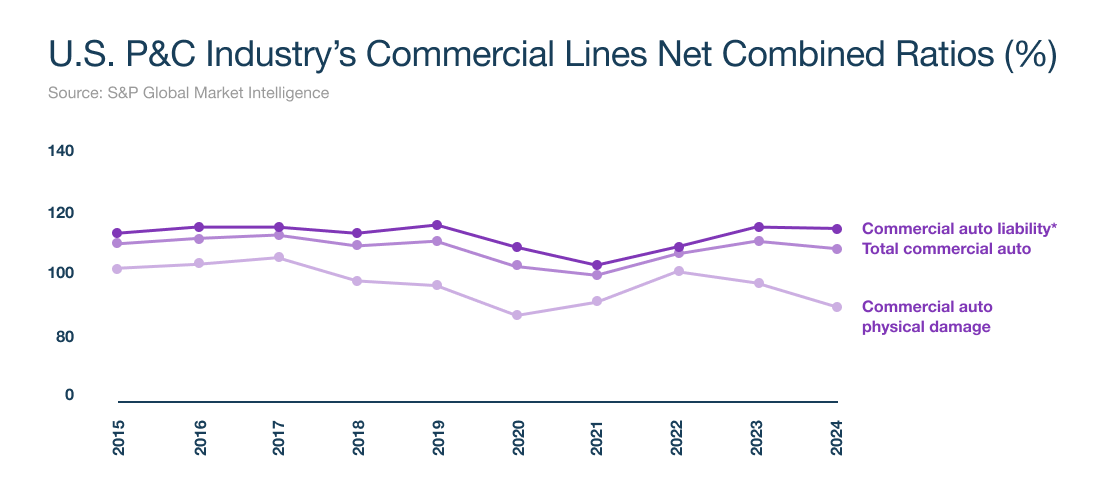How Commercial Insurers Can Turn Economic Volatility Into a Competitive Opportunity
Learn more about the cost wave affecting commercial auto insurers and how data, regardless of economic uncertainty, can foster stability across the policyholder lifecycle.
.png?width=425&height=425&name=SS_Economic%20Volatility_Hero_1000x1000px%20(1).png)
Insurers are paying more than $1 for every dollar of premium,
which is has led to a reported 107.2% combined ratio for commercial auto in 2024. With an unstable economy, consistent underwriting losses may continue. After reading this paper, you will:
- Know more about the economic challenges that contribute to volatility
- Understand how economic factors are influencing insurance outcomes
- Identify how data-led strategies can foster stability
- Empower internal teams, from Claims to Underwriting, to act effectively

Get the White Paper
Who Should Read This White Paper
Underwriting Leadership
Senior professionals who want to deliver accurate pricing despite underwriting exposures and loss costs.
Insurance Brokers
Those who need to understand the economic landscape and present personalized data solutions for existing and new clients.
Risk Control Managers
For professionals who want to develop data solutions that proactively identify, manage and mitigate economic-related risks.
Product / Innovation Professionals
Team leaders who need solutions to replace legacy systems that enable market share and remain competitive.
.png?width=425&height=425&name=SS_Economic%20Volatility_LP_1000x1000px%20(1).png)
.png?width=618&height=800&name=Report%20Thumbnails%20(618%20x%20800%20px).png)

